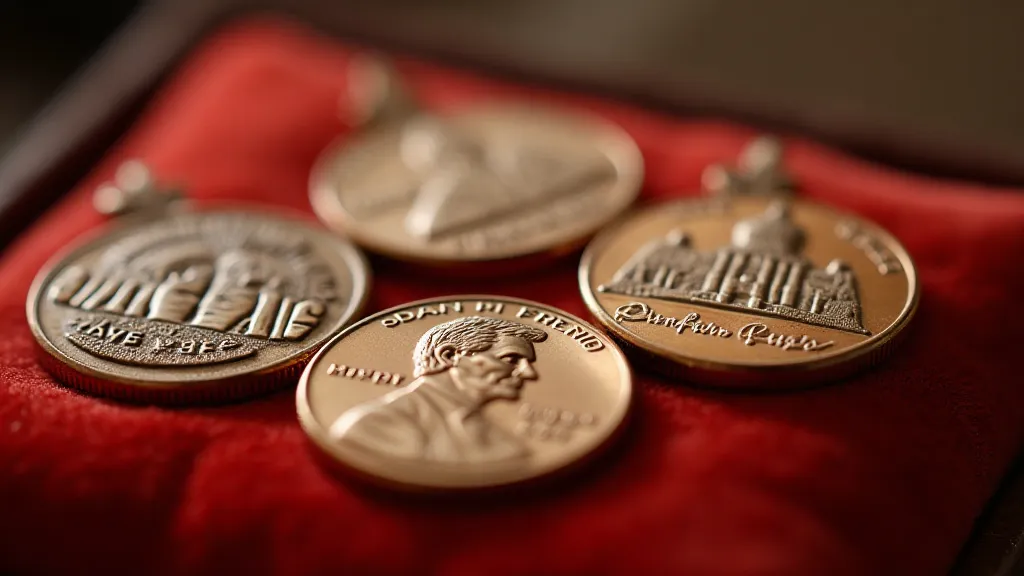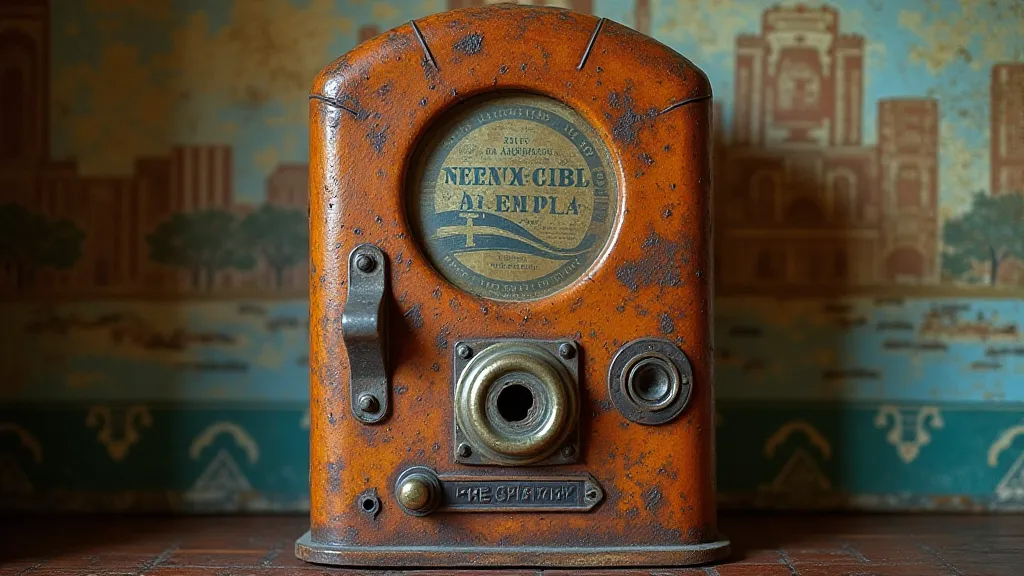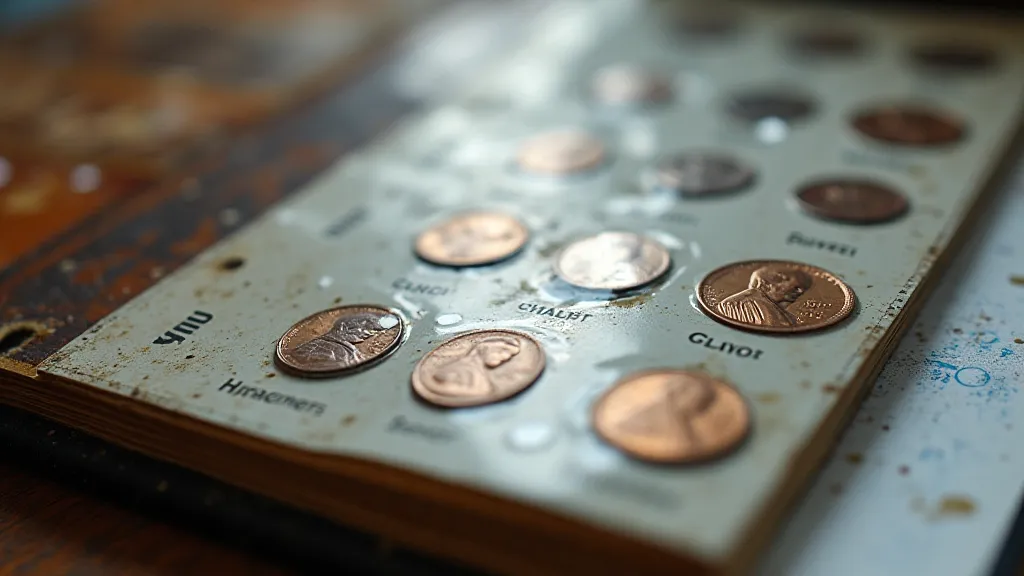The Cartographer's Coin: Mapping a Life Through Pressed Pennies
We often think of maps as vast canvases of geography, meticulously charting coastlines and mountain ranges. But what if a map could be smaller, more intimate, a personal record etched not in ink, but in the soft metal of a pressed penny? For the dedicated pressed penny collector, each coin isn't merely a souvenir; it’s a geographical marker, a tangible memory, a point on a life's ongoing cartography. Think of it: a young couple celebrating their honeymoon in Las Vegas, a family making a cross-country road trip, a solitary traveler seeking solace in a remote national park – all leaving their trace on these humble coins.
The story of pressed pennies themselves is surprisingly interwoven with American ingenuity and the nascent tourism industry. While vending machines existed long before, the concept of pressing pennies into souvenir designs took hold in 1951, pioneered by Simeon Whitney. Initially, these machines were rudimentary, often found in amusement parks and tourist traps. The appeal was immediate and enduring: a cheap, accessible memento that could be easily stored and cherished. The early designs were often simple – the park’s logo, a local landmark – but they quickly evolved to reflect the evolving tastes of vacationers. Now, nearly seventy years later, the hobby has burgeoned into a vibrant community of collectors, drawn not only to the aesthetic appeal but also to the narrative potential of these tiny metallic landscapes.

Beyond the Souvenir: The Narrative Weight
It’s easy to dismiss pressed pennies as mere trinkets. But to the collector, they represent something much more profound. Consider the difference between simply *seeing* the Grand Canyon and holding a pressed penny bearing its iconic image. The coin becomes an anchor to that experience, a physical reminder of the awe and wonder. I recall a conversation with a seasoned collector, Arthur, who shared his story. He’s traveled extensively throughout the United States, meticulously documenting his journeys with pressed pennies. Each coin isn't just a location; it’s tied to a specific memory - the taste of local food, the kindness of strangers, a breathtaking sunset over the desert. His collection isn't just a catalog of places; it's a chronicle of a life lived fully, a testament to the transformative power of travel. For Arthur, the physical act of collecting, of organizing these tiny tokens, becomes a powerful way to relive those experiences and solidify his personal history. He finds a comfort and a connection to the past in the repetition of the pressing, just as an antique accordion collector finds solace in the mechanical elegance of a vintage instrument.
The beauty of pressed penny collecting lies in its openness to interpretation. The narrative is entirely personal. A single coin might represent a momentous occasion - a graduation trip, an anniversary – or a quiet, introspective moment of discovery. There's a certain romanticism to it, akin to the way antique accordion collectors – people who appreciate the mechanical artistry and the music it evokes – find beauty and meaning in the craftsmanship and history of their instruments. Both hobbies offer a portal to the past, connecting us to a time when craftsmanship and sentimentality held a more prominent place in our culture. The careful pressing, the deliberate choice of imagery, all speak to a desire to preserve a fleeting moment in time. It's a powerful reminder that even the smallest objects can hold immense significance when infused with personal meaning. Imagine cataloging your travels not just by photos, but by these miniature landscapes – a truly unique and treasured record of your journey.
The Craftsmanship and Evolution of Designs
While the basic premise of a pressed penny machine hasn't fundamentally changed, the designs themselves have undergone a fascinating evolution. Early designs were often simple, utilitarian images. As technology advanced and the demand for more elaborate souvenirs grew, so did the complexity of the pressed penny designs. You can see the influence of pop culture, contemporary art, and evolving consumer tastes reflected in the imagery. The level of detail that modern machines can achieve is remarkable, showcasing intricate portraits, detailed landscapes, and even dynamic scenes. Many collectors even try to track down machines that produced these rare or unique designs, adding another layer of complexity and thrill to the hobby.
The machines themselves are a marvel of simple mechanics. The precision required to align the penny and create a clear, crisp image is significant. There's a satisfying mechanical quality to operating one, a feeling of connection to the process of creation. Collectors often seek out older machines, not just for the unique designs they produce, but also for the sense of historical connection they provide. Just as antique accordion collectors prize the unique tone and character of older instruments, pressed penny collectors appreciate the quirks and imperfections of earlier machines. These older machines sometimes have slight variations in the designs, making them highly sought-after by discerning collectors. It’s not just about the final product – the pressed penny – but the journey of how it was created.

Rarity, Value, and Preservation
Naturally, the question of rarity and value arises. While most pressed pennies are relatively common, certain designs are highly sought after by collectors. Limited-edition coins, those produced for a short time or in small quantities, are particularly valuable. Coins with errors – misprints or unusual markings – can also command a premium. The condition of the coin also plays a significant role; a well-preserved, uncirculated penny is worth considerably more than a worn or damaged one. For those fascinated by the intricacies of valuing these miniature works of art, delving into the community and learning about factors affecting price becomes a rewarding aspect of the hobby. Resources like online catalogs and collectors' forums are invaluable for determining the rarity and value of specific designs. Some collectors even dedicate entire sections of their collections to particularly valuable or historically significant pennies, showcasing their dedication to the art of collecting.
Preservation is another key consideration. While pressed pennies are made of durable metal, they are susceptible to damage from handling and environmental factors. Storing them in protective sleeves or albums is essential to prevent scratches, tarnishing, and corrosion. Many collectors meticulously organize their collections, categorizing them by location, design, or year. It’s more than just organizing; it’s about curating a visual timeline of your experiences. One collector I met meticulously logged each penny’s location, date pressed, and even a brief anecdote about the experience – transforming his collection into a living journal. This careful curation isn't just about aesthetics; it's about preserving a piece of personal history, safeguarding a cartography of a life well-lived. Sharing your collection and the stories behind each penny can also create lasting connections with other enthusiasts, further enriching the experience. Many collectors enjoy showing off their curated albums, eager to share the narrative woven within.

Building Your Collection: Sharing and Community
The world of pressed penny collecting extends far beyond solitary appreciation. A vibrant community thrives online and in person, with enthusiasts eager to share their knowledge, trade pennies, and celebrate their shared passion. Joining forums, attending conventions, and connecting with other collectors not only expands your collection but also provides a deeper understanding of the hobby's history and nuances. You might even discover that your journey – and your collection – is more meaningful when shared with others. You're contributing to a larger narrative, a collective cartography of memories and experiences. Furthermore, the act of trading or gifting pennies can forge lasting bonds with fellow collectors, creating a network of shared appreciation and camaraderie.
Many collectors find joy in documenting their finds and sharing their experiences online. Creating a blog or social media page dedicated to your pressed penny collection allows you to connect with other enthusiasts, inspire new collectors, and contribute to the ongoing dialogue surrounding this unique hobby. You can share tips on finding rare pennies, organizing your collection, and preserving these small tokens of memory, as explored in The Currency of Memories: Sharing Your Pressed Penny Stories.
Echoes in Bronze: Documenting a Legacy
Ultimately, pressed penny collecting transcends the mere accumulation of objects; it represents a profound connection to place, memory, and shared experiences. For those intrigued by the evolution of these miniature souvenirs and the technology behind them, further exploration of Copper & Chromatic Echoes: The Evolution of Pressed Penny Machine Design is highly recommended.
Embracing the Transient Nature of Keepsakes
Just like life itself, pressed pennies are a reminder of the fleeting nature of time and the beauty of ephemeral moments. Those who wish to contemplate the deeper significance of these transient keepsakes may find solace and insight in The Impermanence of Keepsakes: Embracing the Transient Nature of Pressed Penny Collecting.





